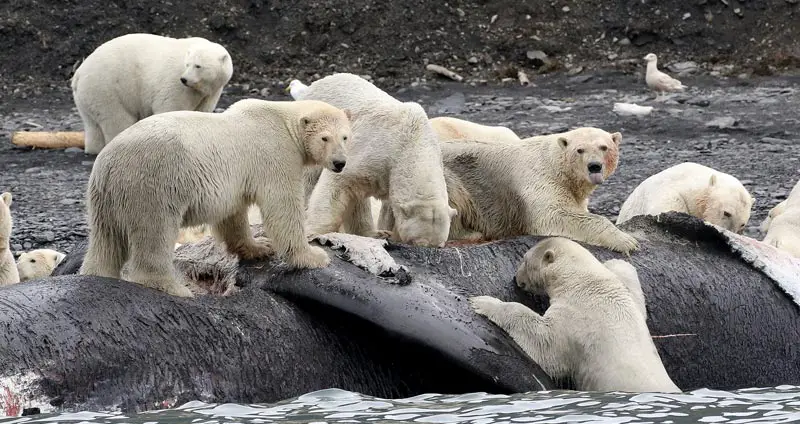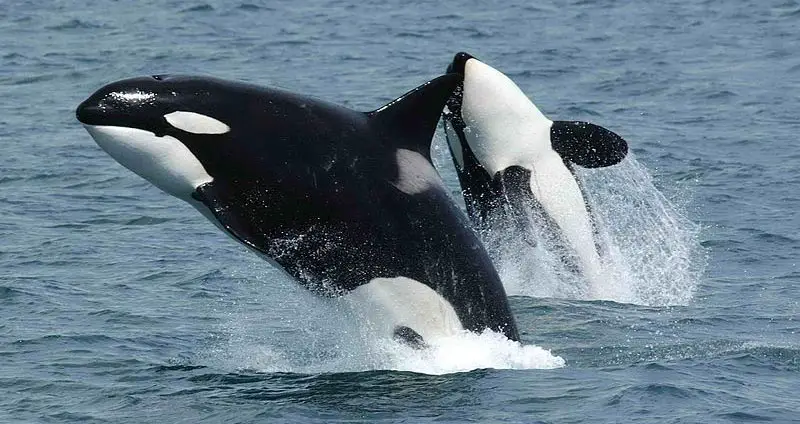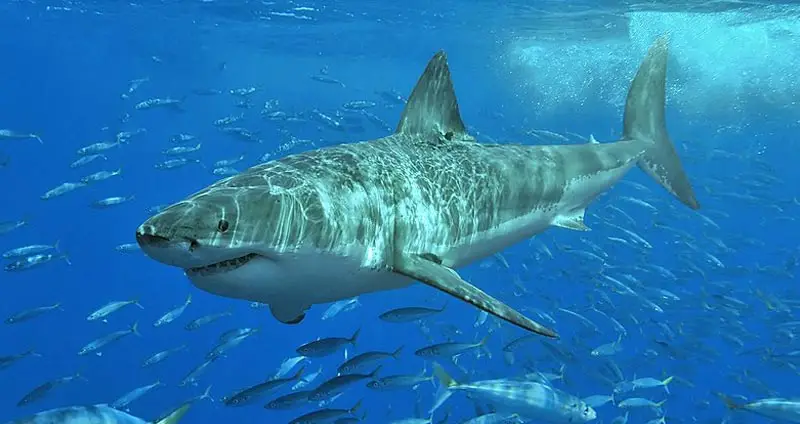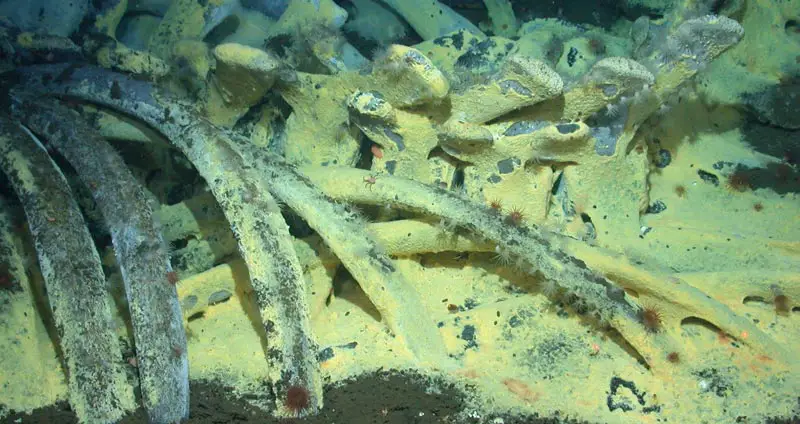When you think of the largest animal, whales are probably some of the first to come to mind. They’re massive in person, with humans looking like little more than toys in comparison. They’re often thought of as slow-moving gentle giants of the sea, harmless creatures who feed by grazing along for plankton.
This is only half true, as their diets make them some of the largest carnivores in the world. The diet of the baleen whales include zooplankton, krill and small fish. Toothed whales are active predators who hunt and eat squid, fish and seals.
It might be difficult to imagine another animal that could hunt them due to their sheer size alone. But are they completely untouchable? What predators can manage to hunt whales?
Table of Contents
What Eats Whales?
Generally speaking, whales are just too big to have many predators besides humans. There are very few natural predators that hunt them, and even fewer that actively hunt them for food.
The ten heaviest living animals are all whales – including the blue whale, which is the largest known animal to have ever existed on Earth. It’s easy to see why most predators wouldn’t even bother trying with fully grown whales, and mostly go after their young.
If a grown whale is killed for food, it’s very likely that it was sick or in some kind of distress.
However, whales do have some natural predators, and some creatures that only scavenge. We’ll elaborate on all of them below.
1. Humans

The practice of whaling began thousands of years ago, with some debate as to who the first whalers really were. Early on, man hunted them for their meat and blubber in order to survive in places where the climate was unsuitable for growing vegetables.
Later on it became a highly lucrative practice in which the whales were hunted and killed for not only the meat and blubber, but also whale oil, ambergris and spermaceti.
Tens of thousands of whales were killed and several species of whales nearly went extinct as a result. Thankfully, commercial whaling was outlawed in 1986 under the IWC’s moratorium.
However, some countries have still continued commercial hunting to this day, under the guise of “scientific whaling”.
Over a thousand whales are still killed each year to be sold for meat and body parts.
2. Polar Bears

While polar bears can’t actively target large whales, when possible – or necessary – they will go after beluga whales and narwhals.
They’re unable to match whales in swimming speed, but the polar bears solve this problem by lying in wait for these smaller whales to surface at breathing holes or scavenge the blubber from already dead whales they manage to find.
On one occasion, a starving polar bear was witnessed jumping from rocks above into the middle of a beluga pod, where it successfully managed to capture one.
These whales are comparable in size to the polar bear, however, making them unappealing as a prey of choice unless options are limited.
3. Orcas

Also known as killer whales, these cetaceans aren’t actually whales at all – they’re the largest member of the dolphin family. They are one of several apex predators living in the ocean, traveling in tightly-knit family groups of up to 35.
Transient orcas are known to target whale calves, and they will sometimes make attempts on visibly distressed, weak or sick whales.
Orca pods have been known to sometimes chase down large whales until they are too exhausted to escape before the orcas move in for the kill, but they don’t normally prey upon fully grown, healthy whales.
Off the coast of Monterey, California, a pod of orcas was seen chasing a blue whale until it was finally able to flee, although the marine biologist who captured footage of the event states that it’s more than likely they only did it for fun. (The whale was fine.)
4. Sharks

Unsurprisingly it’s only the larger shark species that prey on whales. Much like the orcas, sharks also tend to prey on the calves, the old or sick whales.
Adult whales are not typically eaten by sharks unless they are already dead or otherwise incapacitated.
Great whites in Australia have been seen following adult humpback whales on their way to their breeding grounds, and many of these whales carry distinctive scars from sharks raking them with their teeth.
In any case it’s a group effort by the sharks, who draw blood from the whale as they chase them, which in turn attracts even more sharks.
5. Whale Fall Phenomenon

Technically, a lot of things eat whales. A whale carcass only floats as long as it has enough decomposition gases to keep them on the surface, but once that’s gone it eventually sinks to the ocean floor to the bathyal or abyssal zones.
When it does it becomes a small (relatively speaking) complex ecosystem known as a whale fall phenomenon, which is a rare sight.
Scavenger animals like hagfish, sleeper sharks and lobsters don’t take long to feast on the soft tissues, which can take anywhere from a few months to over a year before they leave behind little more than bones.
Small creatures such as zombie worms move in to consume the bones with a specialized chemical process that pushes oxygen into the bones, and in turn speeds up their decay. These tiny worms burrow inside the bones and can live off the whale skeleton for up to a decade.
The entire process as a whole can take up to over 4 years total, in which time marine biologists are still not completely sure just how many species – or even what species – all arrive to partake in this fascinating event.
How Do Whales Defend Themselves?
Since one would expect that whales have no terribly obvious ways of fighting back when threatened, how can they manage to fend off predators when they do come around?
- Tails – In larger whales this can become a deadly weapon. Humpbacks and sperm whales can easily disarm or injure a predator by thumping them with their tail.
- Pod living – Most whales are well-known for traveling in pods, which are social groups that vary in number depending on species. Members of a pod will often surround the calves or infirm to protect them from predators who come looking for a meal.
- Size – Some species like the blue whale are more solitary than others, traveling alone unless they are with a mate or their calf. In the blue whale’s case, however, their main advantage is their size. It’s not hard to see why – they can grow up to 110 ft. in length. Even early whalers avoided them due to their sheer mass, which was capable of capsizing even large wooden vessels. The grey whale was given the nickname “devilfish” by these whalers because they were known to ram vessels that attacked the whale or its calves.
- Speed – Another advantage that many whales have is their surprising speed. With something so massive one expects them to swim pretty slowly, but a blue whale is capable of a top speed of 30 mph, while humpbacks are capable of reaching 16 mph.
- Diving – Many times, the way a whale escapes danger is as simple as diving down where they can’t be followed by sharks or even orcas.


